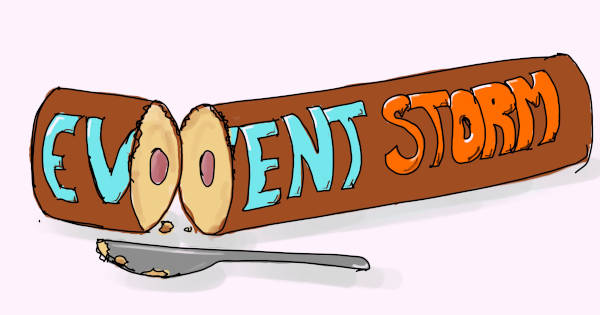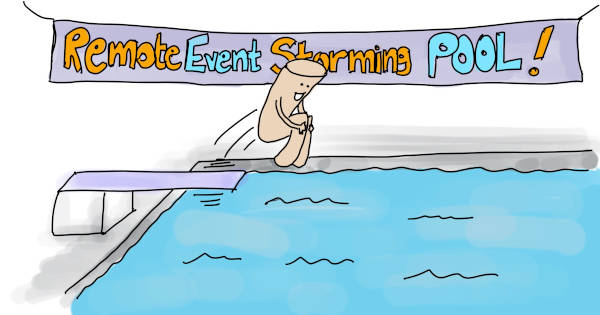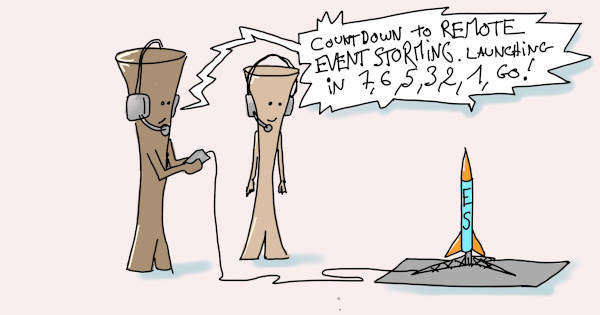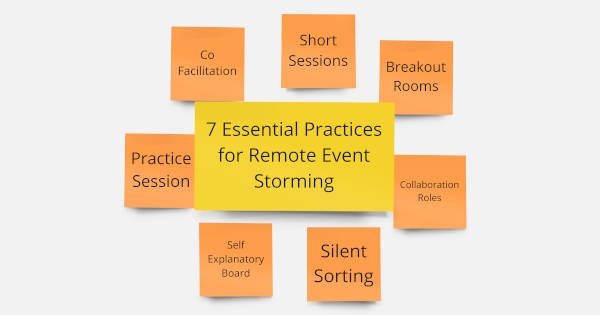How Metaphors can help you focus and succeed in Event Storming
You modeled your workflow with Event Storming. Now use a metaphor to give a name to this model. This post explains how and why this is good practice.
A picture is worth a thousand words.
When it comes to understanding complex business processes, a metaphor can be worth millions.
This previous post describes the steps to visualize a workflow with Event Storming. The resulting visualization looks something like this.

Let’s call this visual model the “Big Picture”.
It is now time to take a step back to digest what you see.
You can do this in 3 steps:
- Identify the main steps of the workflow on the Big Picture.
- Get insights from looking at this enriched Big Picture .
- Give a title to your Big Picture. The below post describes these simple steps.
Putting a title to your Big Picture is an easy and fun activity that brings important benefits. You can read the list of them at the end the post. For example, having a title allows you and your team to name what it is that you want to avoid.
But let’s first go back to the Big Picture.
1. Identify the main steps of the workflow on the Big Picture
Start by asking the participants to:
- Find clusters of events that fit well together.
- Define a name for each of these clusters of events.
- Draw a vertical line between each step. They can use tape or draw lines on a digital tool. Now, your Big Picture should look something like this:

2. Get insights from looking at the Big Picture.
The previous step made the Big Picture more digestible. Now that it has some structure, it is easier to step back and not get lost in the details.
Ask the participants the following questions:
What are you noticing? What does this picture show? What are your thoughts and feelings? What seems to be a recurring pattern? Where do you see activities that create unproductive results?”
Give them 3 minutes to think alone, then ask them to join in a group of 2 or 3 and discuss their thoughts for 5 minutes.
Once done, ask the whole group to voice some of the things that they shared in their discussions. Don’t let this go on and on. Timebox this discussion to 5 minutes max and try to get as many different inputs as possible.
3. Pick a title
Now comes the fun part!
Use the following prompt:
Based on your discussions, now find a name for your Event Storming. It can be a name you invent, a song title, or the title of a famous movie. Be creative and have fun!”
Ask participants to think alone for 1 min. Then, in groups of 3, ask them to come up with a proposal and stick it on the wall.
Use dot voting to select the best proposal. Ask participants to:
Select one of the proposals. Pick the one that you would mention, to remember what you want to stop! For example, you could say: “guys, we are doing [ title ] again”.
Back to the Future, Groundhog Day, and Highway to Hell are classical choices!

4. Why is this activity useful? What are the benefits?
Giving a fun title for your workflow may seem trivial. Yet, having a name to refer to, that represents what you want to avoid is very useful for several reasons:
- You can mention it when falling back to the undesired pattern.
- It builds a common language over what your group wants to avoid.
- With a song or movie name, you do not make a drama of the undesired situation but rather make fun of it.
- The simplicity of the metaphor prevents digging further into the analysis.
This 4th benefit is key as, at this stage of the Event Storming, what you want to do is to start looking for possible ways to improve your workflow.
How to do this? Keep posted! This is what we will discuss in future posts 😉!
This blog post is part of the 1h Event Storming book that we are currently writing.




Leave a comment